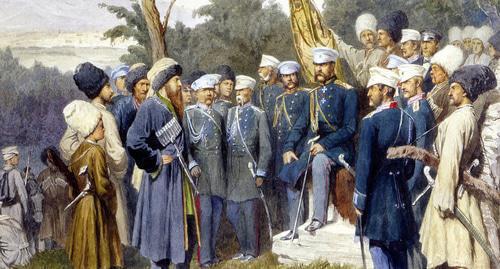Historians point to stereotyped opinions about capture of Imam Shamil
The fall of Gunib and the capture of Imam Shamil, contrary to the popular belief, did not lead to the end of the Caucasian War, the historians interviewed by the "Caucasian Knot" believe and regret that for over 150 years the image of Shamil has been used by authorities for self-promotion.
In 1859, Imam Shamil, the leader of the mountaineers of Dagestan and Chechnya in the struggle for independence, was besieged in Gunib, and on September 7 (by the new style), he surrendered. After that, the war in North-Eastern Caucasus was over.
Vadim Mukhanov, a senior researcher at the Centre for Caucasian Studies at the Moscow State Institute of Foreign Relations (known as MGIMO), has noted that after the capture of Shamil, "the full stop in the Caucasian War wasn't put."
He has added that in different periods "the figure of Shamil was controversial."
"On the one hand, he was the leader of highlanders' struggle against the Russian Empire ... However, after 1859, he became a prisoner of war, or rather, an 'honorary prisoner'," the historian has stated.
At the same time, "some experts see Shamil only as the leader of the anti-Russian struggle."
In July 2017, Ramazan Abdulatipov said that "in the history of Dagestan, there was and is no more outstanding personality than Imam Shamil."
Imam Shamil is "the historical figure number one in the Caucasus," historian Khadji Murad Donogo is sure.
However, according to his version, "some people, who are far away from history, are pouring mud on Shamil for his surrender and swearing an oath to the tsar."
This article was originally published on the Russian page of 24/7 Internet agency ‘Caucasian Knot’ on September 8, 2018 at 04:03 pm MSK. To access the full text of the article, click here.
Source: CK correspondents

